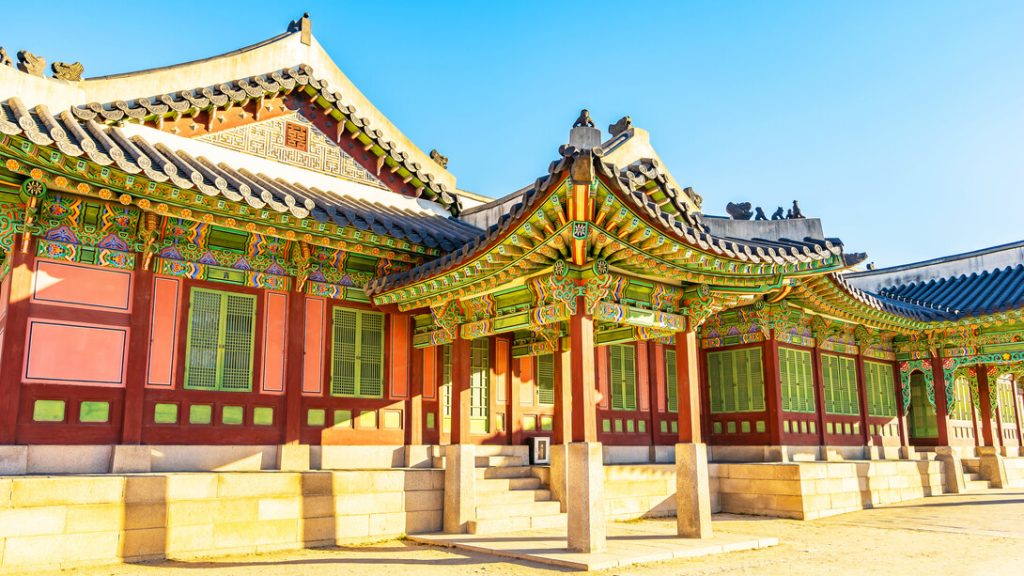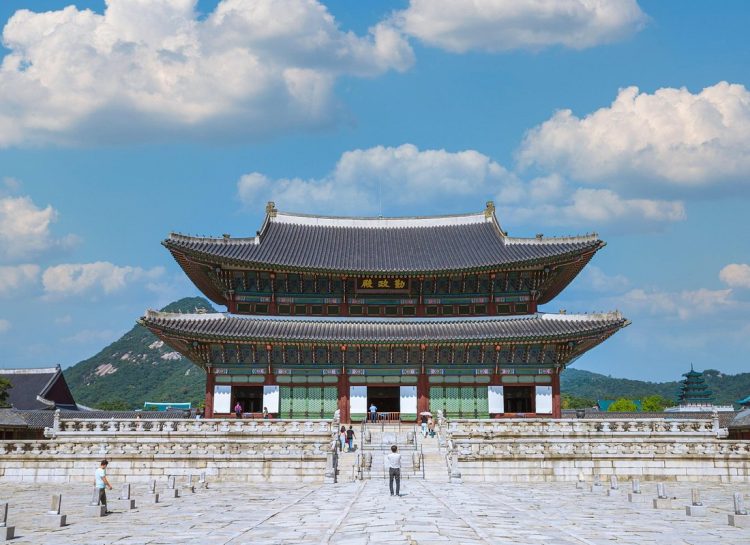South Korea is one of the few places in the world where a traveler can walk through a royal palace in the morning, sip matcha from a 600-year-old teahouse in the afternoon, and finish the night dancing in a hyper-lit club that looks like it belongs in a sci-fi movie. It’s not just a destination—it’s a beautiful collision of past and future. South Korea’s unique ability to balance its deep-rooted Confucian traditions with lightning-speed innovation has created a travel landscape that’s rich, dynamic, and unforgettable. Whether you’re seeking soulful cultural immersion or high-tech adventures, this country promises both—often on the same street.
Introduction: South Korea’s Seamless Fusion of Tradition and Innovation
At first glance, South Korea dazzles with its towering skyscrapers, neon-lit boulevards, and digital conveniences that make even the savviest traveler feel one step behind. But peer beyond the surface and you’ll discover a culture steeped in centuries-old customs—like bowing as a sign of respect, honoring ancestral rites, and practicing traditional arts that have remained unchanged for generations.
What makes South Korea stand out isn’t just that it preserves its traditions—it’s how these traditions coexist with modern life. In Seoul, it’s completely normal to see someone wearing a hanbok (traditional Korean attire) in front of a Joseon Dynasty palace, then head across the street for an Instagram shoot in a holographic dessert café. The country doesn’t draw a hard line between old and new. Instead, it folds them together in a way that feels authentic, not staged. That’s what makes traveling here such a visceral and layered experience—there’s always something unexpected around the corner, and it’s often a mix of the timeless and the futuristic.
Cultural Insights: Traditional Korean Tea Ceremonies, Hanbok, and Festivals
Korean culture places a strong emphasis on respect, community, and ancestral reverence. This can be felt deeply in its traditional ceremonies and celebrations, which are not just preserved for tourists—they’re integral to daily life and national identity.
The Korean tea ceremony is one of the most meditative experiences a visitor can encounter. Unlike its more formal Japanese counterpart, the Korean ceremony is about simplicity, natural flow, and mindful presence. You’ll often sit on floor cushions in a hanok (traditional wooden house), surrounded by calming decor, while a host gracefully pours tea from celadon cups. It’s a moment of stillness, where the aesthetics of the tea, the sound of the water, and the scent of roasted grains or floral infusions become a sensory escape from the urban rush.
Wearing a hanbok is another way to connect with tradition. These flowing garments are more than just pretty outfits—they’re a symbol of Korean elegance, harmony, and family heritage. Many palaces and historic neighborhoods like Bukchon Hanok Village or Gyeongbokgung Palace offer hanbok rentals. Not only do you get free admission to certain heritage sites while wearing one, but you also feel immersed in history. The juxtaposition of traditional dress against the backdrop of ultra-modern Seoul is both surreal and beautiful.
Festivals in South Korea are deeply tied to its agrarian past and spiritual beliefs. Chuseok (Korean Thanksgiving) is one of the most important holidays, when families return to their ancestral homes, perform memorial rituals, and share traditional foods like songpyeon (half-moon rice cakes). Then there’s Seollal (Lunar New Year), where people dress in hanbok, bow to their elders, and play traditional games. For a more festive vibe, visit during the Lotus Lantern Festival, when colorful lanterns are paraded through Seoul to celebrate the Buddha’s birthday—an enchanting display of spirituality and artistry.
Modern Attractions: Exploring Seoul’s Cutting-Edge Technology and Shopping Districts
South Korea isn’t just a guardian of the past—it’s also a harbinger of the future. From AI-powered convenience stores to skyscrapers with immersive light shows, the modern side of South Korea is a tech-lover’s dream.
Seoul, the epicenter of innovation, feels like a glimpse into tomorrow. Areas like Gangnam, COEX Mall, and Dongdaemun Design Plaza are architectural marvels where art, commerce, and technology collide. At COEX, you can browse luxury boutiques, visit a massive underground aquarium, and snap photos at the Insta-famous Starfield Library—all in one complex.
South Korea also sets global trends in beauty and fashion. Visit Myeongdong, where you’ll find beauty megastores packed with skincare products made from snail mucin, ginseng, and fermented rice—yes, it sounds odd, but the results speak for themselves. For high fashion and indie designers, check out Garosugil in Sinsa or Hongdae, a hipster neighborhood brimming with street art, themed cafes, and K-pop vibes.
And speaking of K-pop—it’s more than just music here; it’s a national export. Visit the Hybe Insight Museum (home of BTS and other K-pop giants), take a dance class in Gangnam, or even catch a music show taping if you’re lucky. The energy is contagious and gives you insight into why Korean culture is dominating global pop.
Tech-savvy travelers will also love the country’s hyperconnectivity. Free Wi-Fi is practically everywhere, and cashless payments through apps like KakaoPay are the norm. You can order bubble tea from a robot or check into your hotel via facial recognition. Yet amid all this convenience, there’s still a reverence for etiquette—bowing, silence on the subway, and an emphasis on harmony.

Essential Travel Tips: Best Time to Visit and How to Balance Traditional and Modern Experiences
To fully enjoy South Korea’s layered travel experience, timing is everything. The best times to visit are spring (April–June) and autumn (September–November). In spring, cherry blossoms bloom across the country—especially spectacular at Yeouido Park in Seoul or Jinhae on the southern coast. Autumn is equally magical, with maple and ginkgo trees turning fiery hues, particularly in Naejangsan National Park or the mountains around Seoraksan.
Summers can be humid and rainy, while winters are dry but very cold. That said, if you’re a fan of winter sports, Korea’s ski resorts (like Yongpyong) offer excellent facilities.
When it comes to balancing tradition and modernity, choose accommodations that reflect both. Stay in a hanok guesthouse in Jeonju or Gyeongju for an immersive traditional experience—sleeping on heated floors and eating homemade bibimbap from brass bowls. Then book a few nights at a sky-high hotel in Seoul with a view of the Han River and smart room controls that feel like something from a Bond film.
Build your itinerary with contrast in mind. Spend one day exploring Changdeokgung Palace and its Secret Garden, then another at the Digital Media City or Samsung Innovation Museum. Pair a traditional jjimjilbang (Korean spa) experience with a night out at a hologram concert or rooftop bar in Itaewon.
Learn a few key Korean phrases, not just for politeness, but to deepen your connection. Locals appreciate when visitors make an effort—even a simple “annyeonghaseyo” (hello) or “gamsahamnida” (thank you) goes a long way.
Take the train—Korea’s KTX high-speed rail connects Seoul to Busan in under three hours. It’s clean, fast, and efficient, making it easy to explore other cities. Don’t miss Gyeongju, known as “the museum without walls,” for its ancient tombs and temples, or Jeonju, Korea’s culinary capital.
Finally, embrace Korea’s respect for rhythm and space. This is a society that values order and group harmony, so follow queue etiquette, don’t talk loudly on public transport, and remove shoes when entering traditional spaces.
Conclusion
South Korea doesn’t ask travelers to choose between the past and the future—it hands them both on a silver (or celadon) platter. The country’s genius lies in its duality: where Buddhist chants echo through mountain temples even as 5G signals stream live K-dramas at warp speed. You can take part in a centuries-old tea ceremony one moment and shop for smart mirrors and AI facial masks the next. It’s a place where your journey isn’t just about sightseeing but about feeling the heartbeat of a nation constantly evolving—yet never forgetting where it began.
So, how do South Korea’s tradition and modernity create a travel experience like no other? By showing that innovation and heritage don’t have to compete—they can, and do, thrive together. For the culturally curious, the tech-savvy, and the seekers of soul-filled adventures, South Korea is not just a destination—it’s an experience that rewires how you see the world.





















